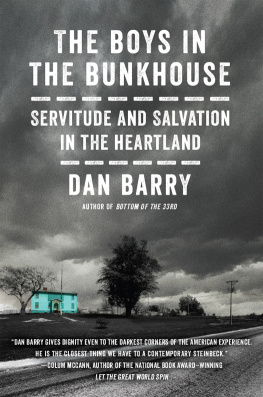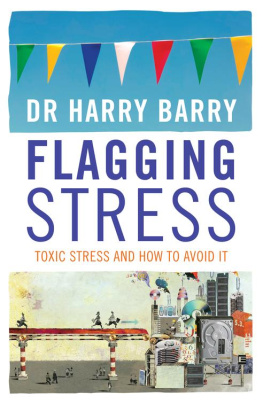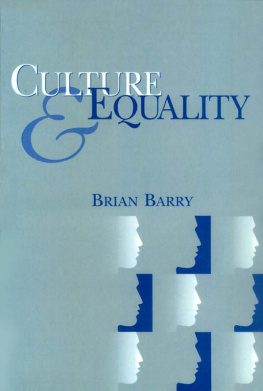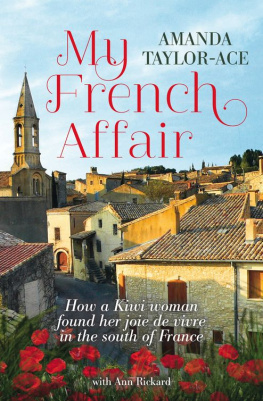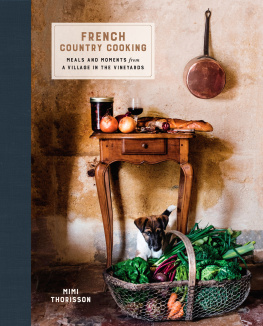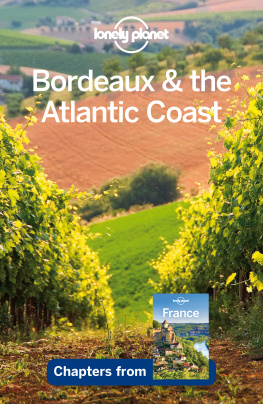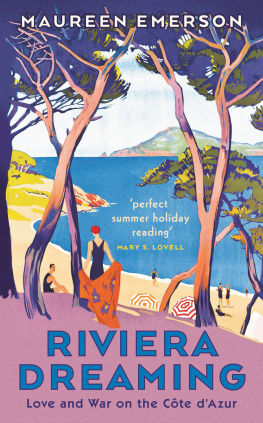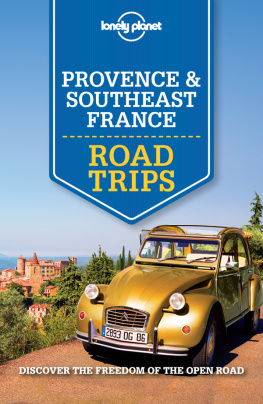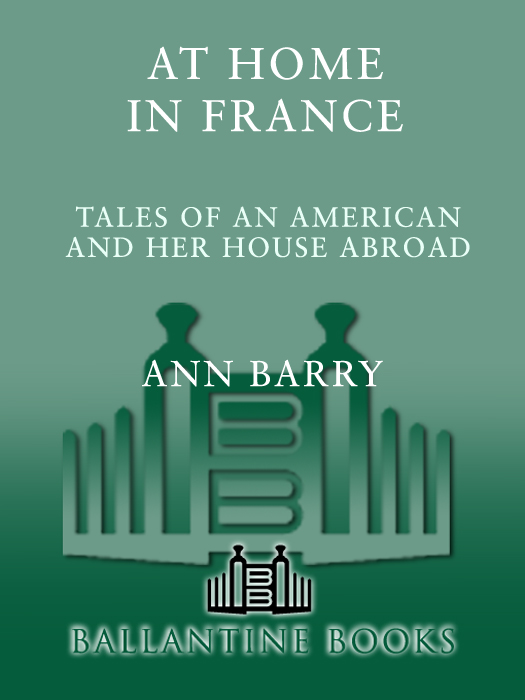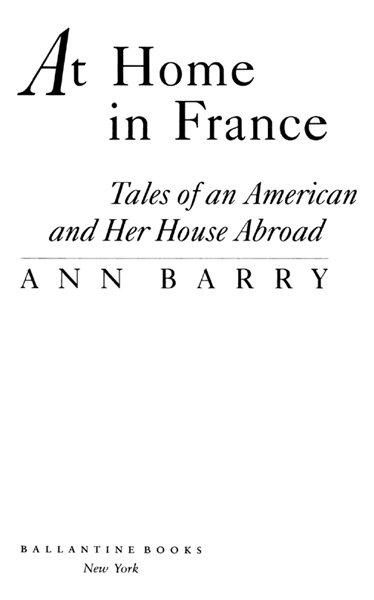A Ballantine Book
Published by The Ballantine Publishing Group
Copyright 1996 by The Estate of Ann Barry
Map copyright 1996 by Laura Hartman Maestro
All rights reserved under International and Pan-American Copyright Conventions. Published in the United States by Ballantine Books, a division of Random House, Inc., New York, and simultaneously in Canada by Random House of Canada Limited, Toronto.
http://www.ballantinebooks.com
Grateful acknowledgment is made to the following for permission to reprint previously published material:
Georges Borchardt, Inc.: The Child from THE LICE by W.S. Merwin. Copyright 1963, 1964, 1965, 1966, 1967 by W.S. Merwin. Reprinted by permission of Georges Borchardt, Inc.
Graywolf Press: Cows from AS IF IT MATTERS by Eamon Grennan. Copyright 1992 by Eamon Grennan. Reprinted by permission of Graywolf Press, Saint Paul, Minnesota.
Library of Congress Catalog Card Number: 96-97100
eISBN: 978-0-307-77565-8
v3.1_r1
Contents
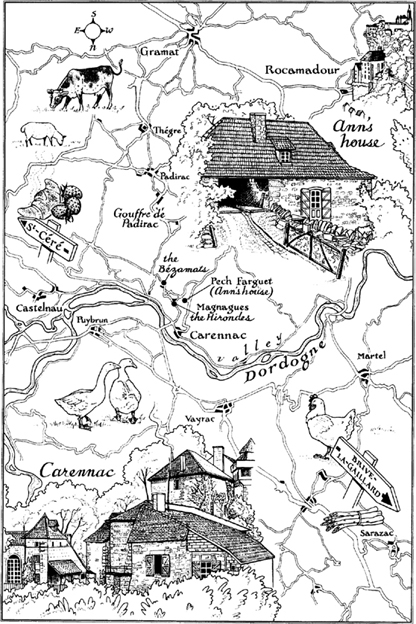
Introduction
Everybody who writes is interested in living inside themselves in order to tell what is inside themselves. That is why writers have to have two countries, the one where they belong and the one in which they live really. The second one is romantic, it is separate from themselves, it is not real but it is really there.
Gertrude Stein, Paris France
My deep attachment to France began in the fall of 1971, when I rented a farmhouse in the Prigord that two neighborhood Brooklyn friends, Joan and Richard Tup-per, were in the process of restoring.
My one obligation in their absence was to contact the local mason, who was to have completed a stone wall. Its purpose, my friends had explained, was to discourage the neighbors cows from tramping through the property. The wall was supposed to start at the road, run in a somewhat straight line down the hill close to the house, and end at the field. The cows, who grazed in the field and were herded home past the house, would then take the route on the far side of the wall from the house.
When I arrived, I could see that the wall had been only partially finished. I called on the mason, who promised to renew his efforts and finish the job within the week. Meanwhile, I made the acquaintance of neighboring farmers, who provided me with fresh-laid eggs (with Halloween-orange yolks) and milk still warm from the cow. To my dismay, they all pooh-poohed the wall: le grand mur de Chine, they called it, guffawing and slapping their knees.
Despite the neighbors mockery, I was pleased to see the wall completed and to have had a small part in accomplishing this for my friends. It was shoulder-high to a cow, solid, and well constructed. On the other hand, I was a little sorry to sidetrack the animals. Cows seem so harmless and benign, working their cuds, batting their gentle eyes. I have a favorite poem, titled Cows, by Eamon Grennan, which captures their special charm. It reads in part:
I love the way a torn tuft of
grass and buttercups and clover sway-dangles
toward a cows mouth, the mild teeth
taking it inpurple flowers, green stems, yellow petals
lingering on the hinged lips foamed with spittle.
I love the slow chewing sound as transformation starts: the pulping roughness of it, its calm deliberate solicitude, its entranced herbivorous
pacific grace, the carpet-sweeping sound of breath
huffing out of pink nostrils. Their eyelashes
black, brown, beige, or white as chalkhave a minuscule precision, and in the pathos
of their diminutive necessity are the most oddly human thing about them: involuntary,
they open, close, dealing as our own do with what inhabits, encumbering,
the seething waves and quick invisible wilderness of air.
One evening not long after the completion of the wall, I was standing by the kitchen window, washing greens and slicing tomatoes for my dinner salad, and gazing approvingly at le grand mur de Chine. Suddenly the large, doleful eyes of a cow met mine. The great beast froze for a moment, the enormity of its face captured in the frame of the open window. I could feel the warm current of its breath. The cow passed, and was followed by another, and another. Eventually, the whole herd plodded before the window, some taking a sidelong, disinterested glance. They had chosen the inside track of le grand mur at the far endtheir well-worn routeto wind their way back to the familiar barn. Le grand mur de ChineI could hear the gleeful echoes.
As the days passed at the farmhouse, the lazy pace of country life took over. The fall foliage was all buttercup yellow (where were the russets and scarlets of home?). The light was golden. I made applesauce from the free fall in the field. I cooked a rabbit for the first time in my lifeovercoming a slight horror when I discovered its stark skinned nakedness at the feet of an old black-garbed farmer woman in the marketplace. For breakfast, I had its gamy liver on toast. I wanted to try it allwhatever was different from the plain fare of my Midwestern (suburban St. Louis) upbringing. I made picnics of sausage, cheese, great crusty sourdough bread from the village baker, local wine. I spent a weekend on a nearby farm, learning from an energetic young couple how to make confit and foie gras. I tooled around from village to village in Richard and Joans 1954 Citroen Onze Lgre, a majestic, although temperamental, black beauty with rosebud petit-point upholsteryand in a burst of panache bought a beret in the clothing stall at a market to match the flamboyant mood the car inspired in me.
Midway through my stay, I decided to try an experiment. I would ignore watches and clocks, and simply follow natures rhythm: sleeping and rising according to the light, eating when I was hungry. In my modest Thoreau-like existence, I didnt miss the comforts of home. There was pleasure in taking a cold sponge bath in the old tub and squatting over the primitive toilet in the bathroom, which, yet to be restored, was attached to the outside of the house. I slept on a cot before the dying embers in the great stone fireplace. I was happy in a way Id never been before. I was nearing thirty, largely uncertain of where my life was headed. Here, I was unfettered, simply at peace.
I took other vacation trips to France, but none compared with those halcyon days. Then, one morning on my way to work in Manhattan, I ran into Richard on the No. 3 subway train. He had some photographs of other properties in the area that were for sale. I moaned, seeing dreams pass before my eyes. You can do it, too, he said emphatically, and gave me the address of a French real-estate agent, who was, in fact, an Englishman. The idea hit me full force. Could I do it?
The agent sent me photographs of several properties. One with a sunny view of a little stone house in the village of Carennac utterly captivated me. Joan was in France at the time and, since she had a real-estate license, could serve as an intermediary. I could imagine her charming the French: she is an attractive blond-haired, blue-eyed woman with a sparkling personality and Southern manners. She managed to open up a personal bank account for me so that I could funnel funds from New York. Scraping every penny together, and initially splitting the cost of the house with my adventuresome older brother Gene (whose share I eventually bought), I came up with the complete payment.


